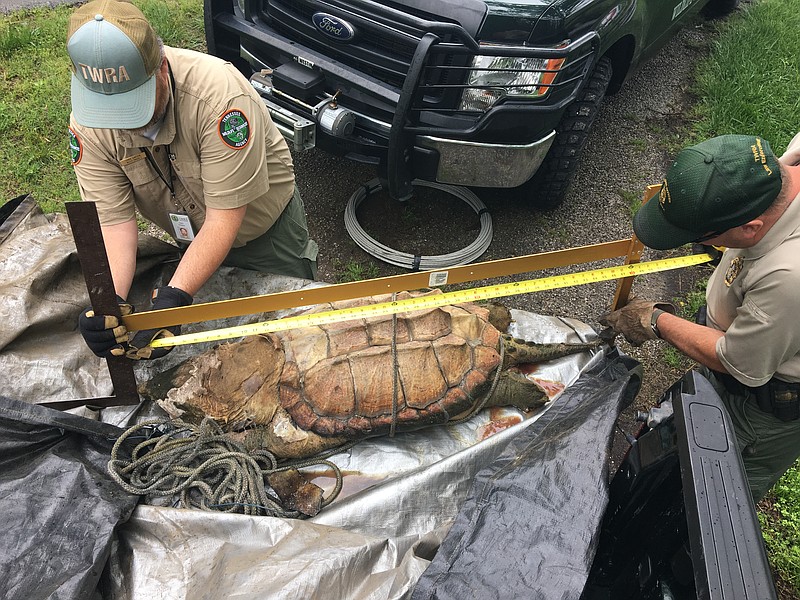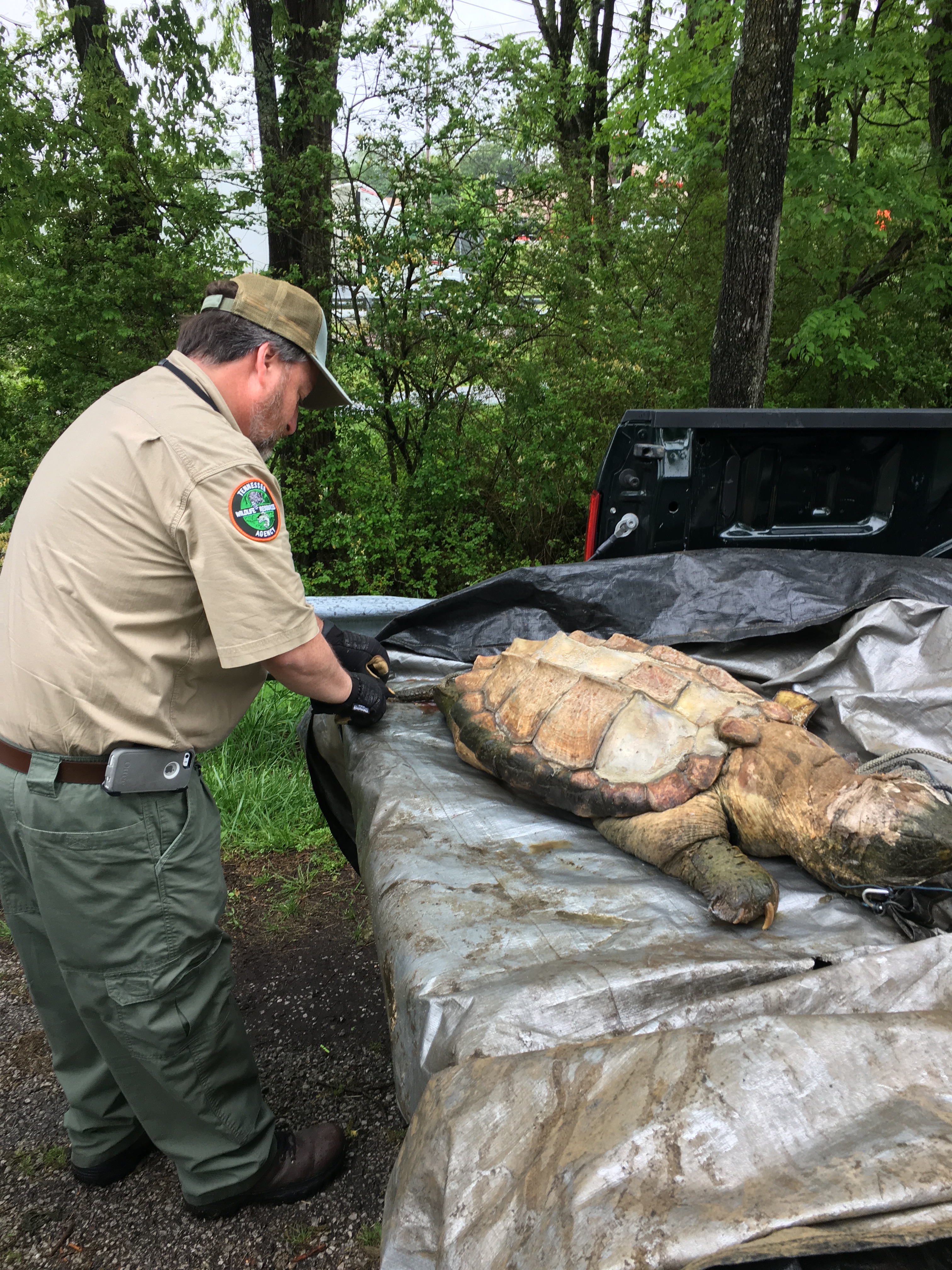Alligator snapping turtle facts
Historically, the alligator snapping turtle’s range spanned over 14 states from watersheds of the Mississippi River down to waterways that drain into the Gulf of Mexico. During the 1960s and 1970s, wild populations of the alligator snapping turtle were decimated due to commercial harvesting for their meat. Current threats include habitat destruction, egg predation and low survival of babies, as they are food for many species. Females of this species don’t produce large clutches of eggs, making recovery from low populations difficult. The Tennessee Wildlife Action Plan identifies the alligator snapping turtle as a species of greatest conservation need. This species is also listed as “in need of management” by the Tennessee Wildlife Resource Agency and is considered imperiled by the Tennessee Department of Environment and Conservation.Source: Tennessee Wildlife Resource Agency
State wildlife officials are working to determine how an alligator snapping turtle made its way more than 100 miles to Center Hill Lake in DeKalb County, Tenn.
In Tennessee, alligator snapping turtles primarily are found west of the Tennessee River. But there have been a few findings along the Cumberland River system, wildlife officials said. Center Hill Lake, near Smithville in Middle Tennessee, is about 120 miles east of the Tennessee River as it flows north toward Kentucky. It's about 75 miles northwest of Chattanooga.
On Friday, the Tennessee Wildlife Resources Agency received photos of a dead alligator snapping turtle. That resulted in a call to Putnam County TWRA officer Mike Beaty, who holds a degree in wildlife and fisheries management.
Beaty met with U.S. Army Corps of Engineers officials and then contacted his colleague Chris Simpson, a wildlife diversity biologist out of TWRA's Crossville office, who joined the quest for answers, TWRA spokeswoman Mime Barnes said.
"We don't know whether this animal was moved [to Center Hill Lake]," Barnes said Wednesday. "We're hoping some of the genetic testing reveals the waterway of origin, but at this point, we don't know."
It's illegal to move turtles and most other wildlife. And it's in the animals' best interest to leave them where they are so diseases don't spread, Barnes said. Moving them also affects their ability to produce offspring.
"Some animals are site-specific, meaning they can only reproduce in the waters or area where they were born. So if you move them, they are out of their reproduction cycle," she said.
Before their protection, alligator snapping turtles' populations declined over the years because the animals were overhunted for human consumption. TWRA's Region 1 office in Jackson has been working with the species since the 1990s with restorative efforts continuing today, officials said.
The most recent sighting outside alligator snapping turtles' current range was in Davidson County in 2016.
Aside from the question of how the turtle got into the lake, the whole incident has tickled TWRA's science bone.
"We love the mystery of it. You want to invigorate scientists?" Barnes laughed. "We love wildlife and we want to see wildlife thrive, so we were pretty excited about finding this turtle even though it was dead."
Alligator snapping turtles prefer slow-moving waters with soft substrate on the river bottom. They are not as long-lived as other large turtles such as ocean turtles.
Male alligator snapping turtles live an average of 26 years and females live an average of 23 years. The alligator snapping turtle is the largest turtle in Tennessee with an average carapace, or shell, length of 20-24 inches, officials said.
Simpson gathered data and collected genetic material from the Center Hill Lake turtle, which had a 19.5-inch carapace and an overall length of 4 feet.
Unfortunately, the turtle - thought to be male - was fairly decayed and could not be weighed.
Center Hill Lake dam was built in 1948, and officials said the turtle would not have been in the area before that time. However, the species naturally occurred in the Cumberland River system before the building of the dam, officials said.
"Dealing with these situations and cataloging information is truly enjoyable," Simpson said. Any information gained on a species with "greatest conservation need" status is valuable, he said.
Sightings can be reported by contacting a TWRA regional office. TWRA's Region 3 Crossville office manages 24 counties in Southeast Tennessee counties and on the Cumberland Plateau extending to the Kentucky state line.
To report an alligator turtle sighting in TWRA Region 3, call 931-484-9571 or 1-800-262-6704 within Tennessee.
Contact staff writer Ben Benton at bbenton@timesfreepress.com or 423-757-6569.

